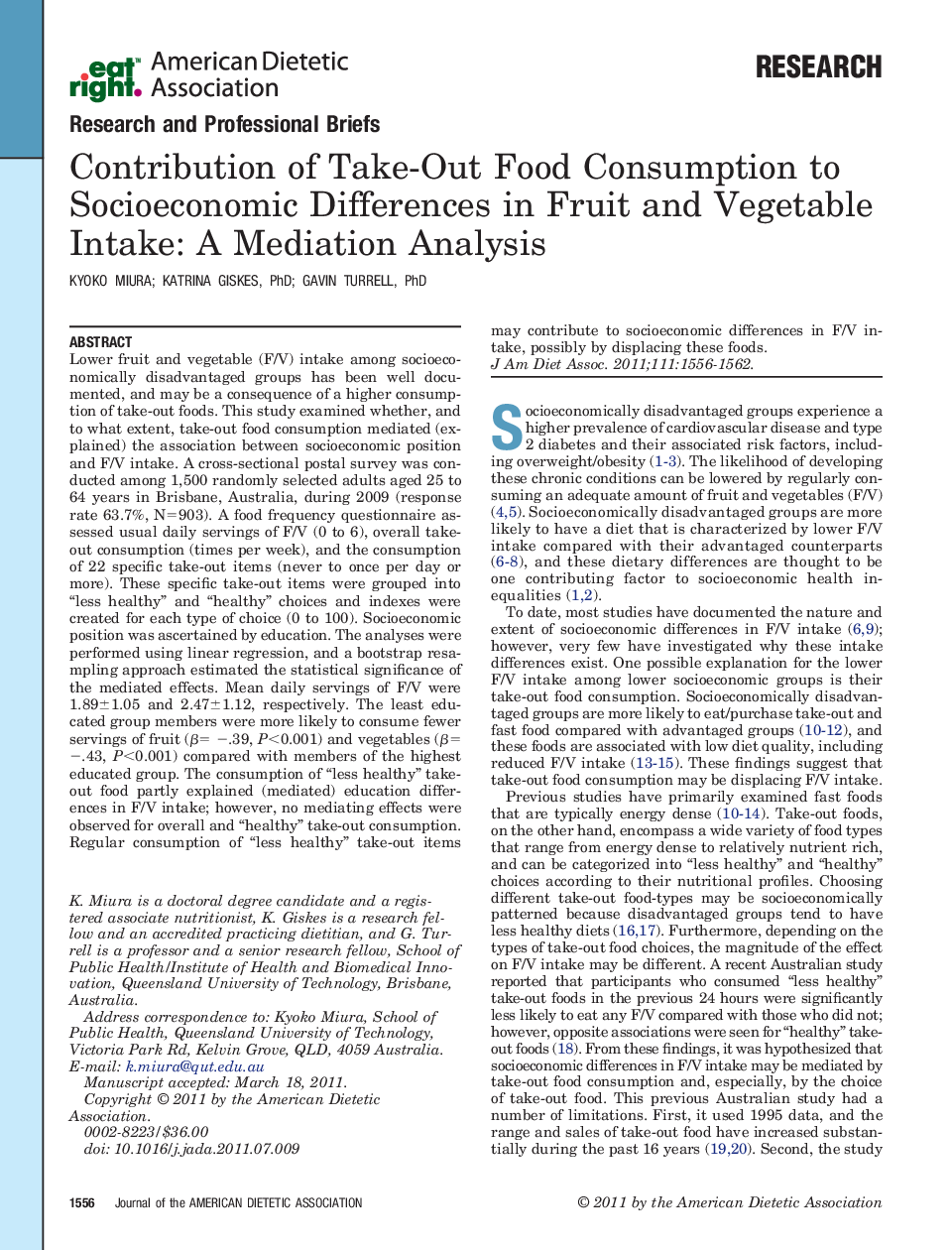| Article ID | Journal | Published Year | Pages | File Type |
|---|---|---|---|---|
| 2653813 | Journal of the American Dietetic Association | 2011 | 7 Pages |
Lower fruit and vegetable (F/V) intake among socioeconomically disadvantaged groups has been well documented, and may be a consequence of a higher consumption of take-out foods. This study examined whether, and to what extent, take-out food consumption mediated (explained) the association between socioeconomic position and F/V intake. A cross-sectional postal survey was conducted among 1,500 randomly selected adults aged 25 to 64 years in Brisbane, Australia, during 2009 (response rate 63.7%, N=903). A food frequency questionnaire assessed usual daily servings of F/V (0 to 6), overall take-out consumption (times per week), and the consumption of 22 specific take-out items (never to once per day or more). These specific take-out items were grouped into “less healthy” and “healthy” choices and indexes were created for each type of choice (0 to 100). Socioeconomic position was ascertained by education. The analyses were performed using linear regression, and a bootstrap resampling approach estimated the statistical significance of the mediated effects. Mean daily servings of F/V were 1.89±1.05 and 2.47±1.12, respectively. The least educated group members were more likely to consume fewer servings of fruit (β= −.39, P<0.001) and vegetables (β= −.43, P<0.001) compared with members of the highest educated group. The consumption of “less healthy” take-out food partly explained (mediated) education differences in F/V intake; however, no mediating effects were observed for overall and “healthy” take-out consumption. Regular consumption of “less healthy” take-out items may contribute to socioeconomic differences in F/V intake, possibly by displacing these foods.
